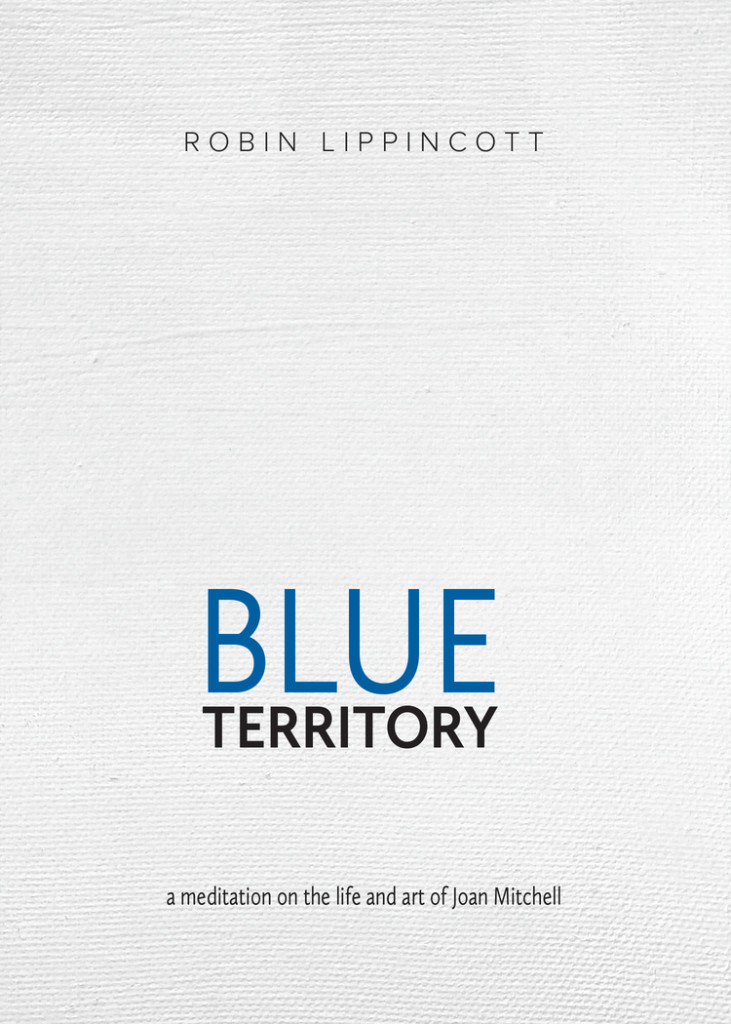Tags
abstract expressionism, art book, biography, Blue Territory, fiction, Joan Mitchell, painting, Paris expat, poetry, Robin Lippincott
BLUE TERRITORY: a meditation on the life and art of Joan Mitchell, by Robin Lippincott. Tidal Press. Blue Territory immerses the reader in the journey of abstract expressionist painter Joan Mitchell (1925-1992), from child figure skater to art student to impoverished expat in Paris to female painter in a male-dominated art world. And while all the ingredients of a strong biography are present—her formative years; her artistic influences; her methodologies; her friendships and lovers—Blue Territory is no mere biography. Blue Territory is itself a gallery of literary artwork—lovingly crafted images that form an artist’s study of Joan Mitchell.
Robin Lippincott’s work has always been strongly informed by his love of and keen observation of art. For ten years, he wrote reviews of art and photography books for The New York Times Book Review. His novel Our Arcadia—crafted like an impressionist painting with its short, deftly stroked chapters—portrayed the lives of a group of friends who set out to share their lives and essentially create a tiny artist’s colony called True House; “What’s important about life at True House is not necessarily birth and death, but art: painting, gardening and finding the Muse in between.” (—Publishers Weekly). Lippincott’s first novel, Mr. Dalloway, was an homage to Virginia Woolf’s Mrs. Dalloway; Lippincott not only imagined a secret, untold life for the husband of Woolf’s protagonist, he told the story in a voice and style akin to Woolf’s. In Blue Territory, he brings this same keen observational acumen and artistic agility to the work and life of Joan Mitchell.
As she works, legs apart, her extended hands and arms become a part of the very air. From a distance (the other end of the studio) she resembles a dark starfish splayed against the canvas, always reaching, stretching—and like a starfish, she cannot be easily pried away from whatever she attaches herself to, in this case painting: for she is finally free, freely creating, and regardless of the source emotion, it is almost impossible not to feel joy in the act.
—Robin Lippincott, Blue Territory
Blue Territory is at once a cohesive and passionate narrative spanning Joan’s life, and simultaneously a gallery of more than thirty short literary works of art inspired by Joan’s style—in several instances including poems that are direct artistic renditions of specific paintings. The Tidal Press print version includes titles in blue ink and makes use of white space much like a gallery or art book, and the cover image is of a blank canvas. Lippincott divides Joan’s life into a triptych—beginning with the unique perceptions of her childhood and the formative influence of her parents and sister, followed by the establishment of her own voice and career with the influences of friends, writers, contemporaries, and predecessors (Frank O’Hara, Samuel Beckett, Wallace Stevens, T.S. Eliot, Rilke, Franz Kline, Willem de Kooning, Matisse, Kandinsky, Van Gogh, Mondrian, Barney Rosset, Orozco, Siqueiros, Gorky, Philip Guston and Sam Francis to name a few), and ultimately the third panel of the triptych portrays her mature and self-assured efforts amidst the physical challenges of her latter years. Blue Territory evokes a deep understanding and connection with the artist, notably focused around specific moments of her creations.
Joan Mitchell’s paintings are inspired by her emotions and the poetry she loves. Robin Lippincott, in turn, creates poetry and prose inspired by her paintings, thus furthering the critical dialogue without which, art becomes meaningless.

